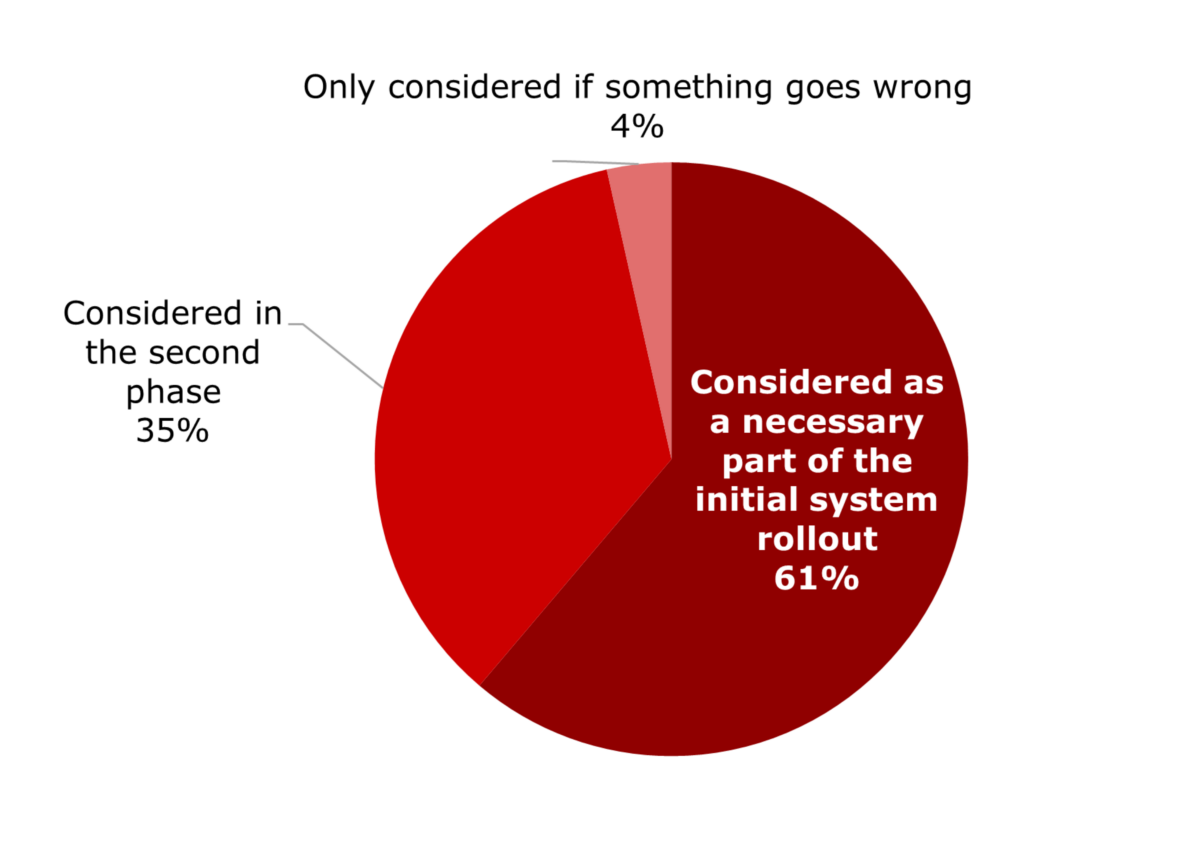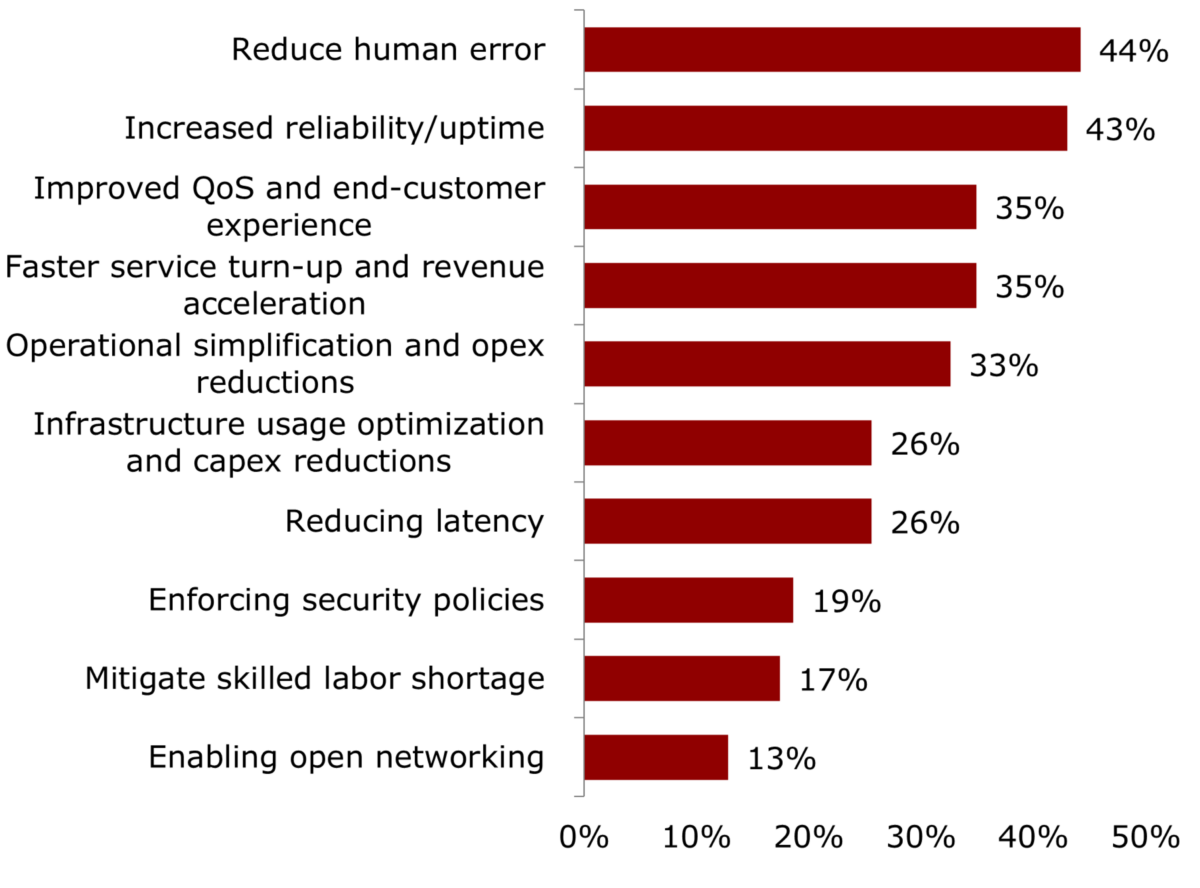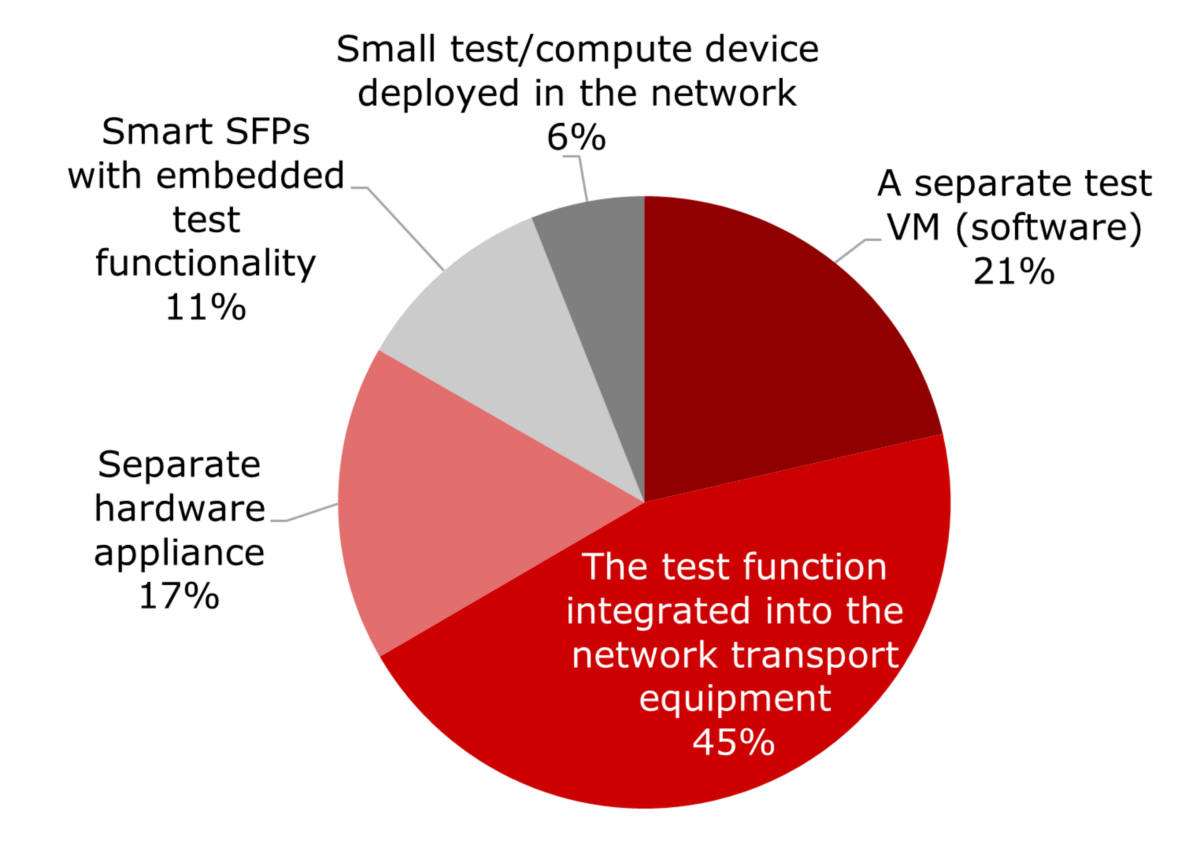Heavy Reading Network Automation Survey Results – Three Takeaways
To gain better insights into the viewpoints of our network service provider customers, VIAVI partnered with Heavy Reading on their second iteration of the Open, Automated & Programmable Transport Networks Market Leadership Survey (along with Infinera and Fujitsu). The 2023 survey attracted a range of qualified network operator or communications service provider (CSP) responses from around the world, sharing their views on transport automation timelines and requirements, optical systems, IP over DWDM, and of course, testing and assurance. To view the entire survey, click the link above. Here we’d like to share with you our three quick takeaways from the survey data.
Before we jump in, however, it’s helpful to keep in mind that CSPs around the world face mounting pressure to do more with less, which means they must drive down operating expenses while keeping customers satisfied. They recognize that managing the network in the same way, only better, isn’t going to get it done. To meet these pressures, network operators are increasingly employing transport automation principles to work smarter and trim expenses.
What is network automation? Network automation is the process of automating the configuration, management, testing, deployment, and operation of physical and virtual network equipment. It is used by CSPs to boost efficiency, accelerate operational tasks, and lower operating expenses (OpEx).
Takeaway #1: CSPs Highly Value the Virtual Test Function
As a test vendor, we know that CSPs acknowledge that testing is good for their business, but some view it as insurance, and sometimes a necessary evil. Therefore, we wanted to know if CSPs planned on integrating the virtual test function into initial network automation rollout, or if it was more of an afterthought. The survey showed that CSPs place a high value on it and do not relegate it to “when I get to it” status. Of all CSPs surveyed, 61% report that network testing is a necessary part of the initial phase of the initial system rollout, and an additional 35% report they will consider testing and assurance right after system rollout. A scant 4% will consider network testing and service assurance for automation only if someone complains.
How important is network testing and service assurance in the context of network automation implementation? Source: Heavy Reading
Source: Heavy Reading
Takeaway #2: OpEx Is the Opponent
Naturally, VIAVI knows the advantages of network automation, but why are CSPs interested in test automation? The survey showed that the root of the industry’s motivation for automation was to 1) reduce expenses and/or 2) keep the end-user happy – confirming our suspicions.
We see multiple motivations listed in the results, but all the top drivers could essentially be grouped into one of the two categories. Interestingly, “reduce human error” is the top driver. Although a highly trained technician does make errors occasionally, our guess at what’s below the surface is the high cost of dispatching a technician to the customer premises in the first place, especially when he or she has no idea what the problem is or if it’s even the carrier’s problem to fix. Wasted truck rolls are what drives up OpEx. A goal of one of our Fusion customers is to install an intelligent Ethernet circuit so that a technician never has to return to the premises for the life of that circuit. That’s the benefit of test automation in a nutshell.
What are the primary drivers for automating your transport networks?

Source: Heavy Reading
Takeaway #3: CSPs Prefer Independent Test & Troubleshooting vs. Built-In OSS
Lastly, the “how” was another area where we wanted more insight. Automated testing and assurance require permanent placement of testing capabilities in the network, and that is done either by integrating the test capabilities and endpoints into the network elements, or by housing them in separate devices.
Among those two choices, the respondents were nearly split. Direct integration was selected by less than half of respondents (45%), while the slim majority, 55%, want or already deploy the assurance and testing functions somewhere outside of the network equipment. Here, the choice is a matter of philosophy.
While acquiring the network test function embedded in the network gear is certainly convenient, it’s not optimal. It’s asking the vendor who’s responsible for sending your packets around your network to also tell you how well they’re doing. Further, network equipment companies tend not to specialize in testing. Thankfully, most network operators feel that uncoupling the networking function from the network test function makes strategic sense. They want an impartial third party running the testing, and a third party who is a test expert, like VIAVI.
If a CSP wants to use a third-party test expert, there are several ways to implement the system. The top choices are virtual machines (VMs, 21%) and separate hardware appliances (preferred by 17%). A smaller percentage of operators envision assurance and testing functions embedded in smart small form factor pluggable (SFP) modules or in small test/compute devices. VIAVI Fusion includes the ability to blend all three, including rack-mounted test heads and portable hand-held meters like the T-BERD/MTS 5800, which makes our solution the most complete on the market.
How do you envision implementing automated service assurance and network testing?

Source: Heavy Reading
Summary
The Heavy Reading survey results did not reveal any significant blind spots in our view of the industry, which was a relief. However, it validated a lot of our assumptions with survey data, which is also very valuable. The survey underscores the criticality of network testing and assurance in operator’s automation strategies. This is not surprising given the primary drivers for automation identified by operators, including increasing uptime and reliability, improving quality of service (QoS), faster service turn-up, and operational simplification. A well-integrated Fusion test system addresses all these goals.
For more information, go to viavisolutions.com/fusion.



